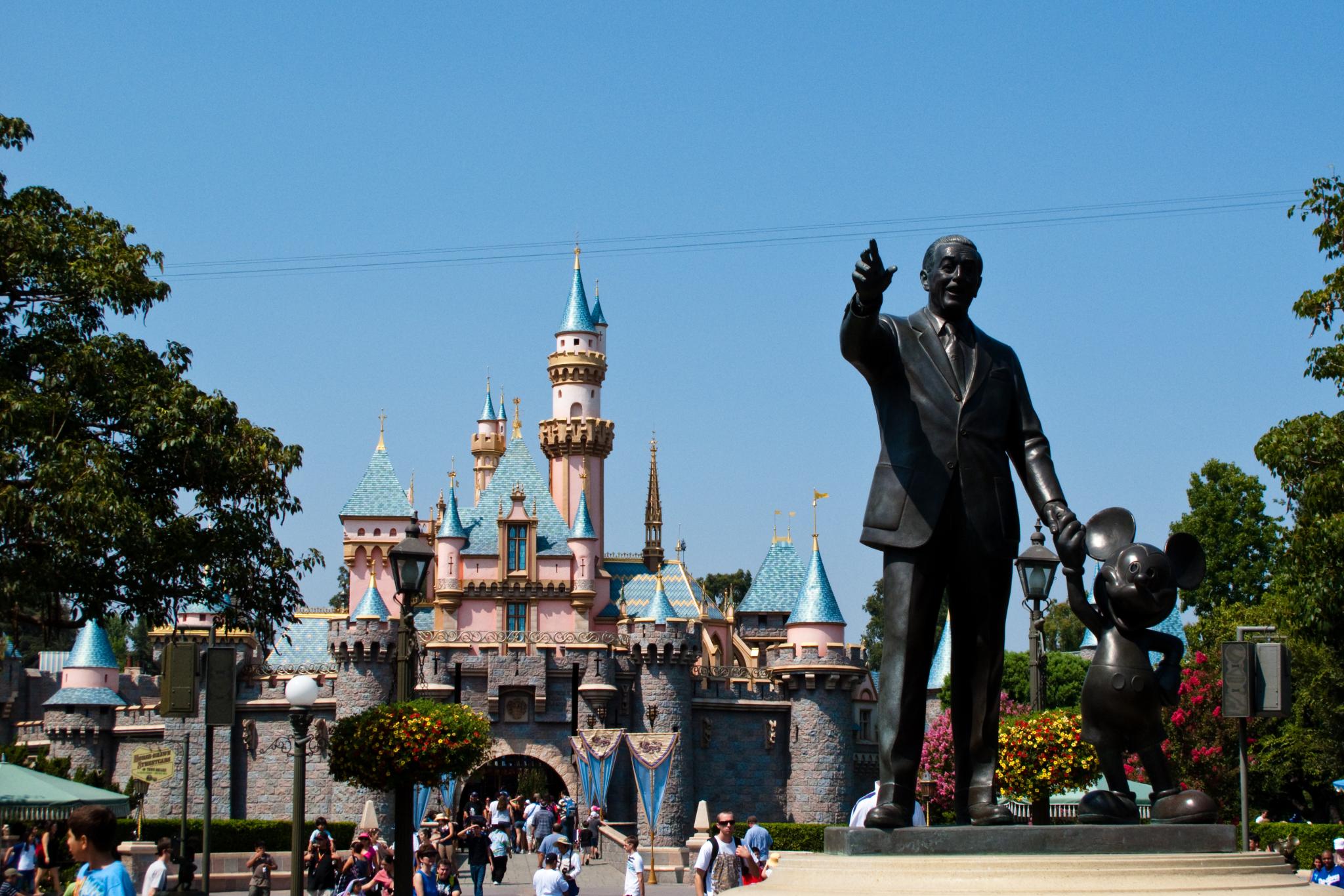
Unlike Florida’s culture war, Anaheim’s containment strategy isn’t making national news; but it could stop Mickey Mouse and co. from moving forward with expansion plans, writes Connecting California’s Joe Mathews. Photo courtesy of harshlight/Flickr
How best to fight Mickey Mouse?
There are two schools of strategy for making war with the Burbank-based Walt Disney Company.
One strategy, from Florida, is making national news because it is driven by the culture war and the presidential campaign of Gov. Ron DeSantis. The other strategy, from Southern California, is little-known because it’s grounded in local concerns in the city of Anaheim, whose residents have spent decades being outmaneuvered by Donald Duck and friends.
Contrary to conventional wisdom, which says that the best defense is a good offense, it’s the Anaheim strategy that is more likely to succeed.
This is, in part, because Florida’s fight resembles nothing so much as Pickett’s Charge, the suicidal, uphill attack that cost the Confederate Army the Battle of Gettysburg.
DeSantis launched media, legal, and political warfare against Disney after the company opposed his legislation, known as the “Don’t Say Gay” bill, that restricts teachers from talking about sexual orientation and gender in Florida classrooms. The bill is part of the governor’s campaign messaging hostile to “woke” progressivism and gender non-conforming people.
The governor seemed to think that a war against Disney would help in the Republican primary polls. Instead, he’s collapsed there. Why? Because he’s launched a cultural attack on the world’s most sophisticated producer of culture. In other words, he took Disney on at its strongest point. Worse still, DeSantis, while seeking the nomination of the party of business, attacked a revered American business.
Meanwhile, DeSantis’ rival, former President Trump, has criticized the governor’s attacks on Disney as excessive. Instead of changing course, DeSantis has revealed himself as a political amateur by digging the hole deeper—moving to strip Disney of control over a local government entity that controls the area around Disney World. Predictably, Disney, one of the world’s richest companies—with better lawyers than the state of Florida—is winning its legal battle with the governor.
But DeSantis’ attacks have been so ham-handed that he has made Disney seem sympathetic, a victim of state persecution.
True to form, Disney, an opportunistic multinational corporation, has moved to exploit that sympathy here in California—and specifically in Anaheim, by seeking to advance an expansion plan called DisneylandForward.
Disney has all but owned the city since the theme park opened there in 1955. Today, it is responsible for one in five jobs and a sizable plurality of general fund revenues. The company has used gifts, investment promises, philanthropy, and raw lobbying and political power to secure a suite of tax rebates and protections, bonds, and public benefits too long to list here. In 2015, the Los Angeles Times estimated the value of Anaheim’s support for Disney over the previous two decades at $1 billion.
But in the previous decade, some civic leaders—most notably former Mayor Tom Tait and former councilmember Jose Moreno—managed to get elected despite Disney’s political opposition to them. And in office, they slowed, and in a few cases reversed, giveaways to Disney. As a result, Anaheim has limited Disney’s geographic footprint to where it stood in the 1990s.
The Anaheim strategy most closely resembles Foreign Service Officer George Kennan’s approach to global communism—containment. Politicians avoided frontal assaults or hot rhetorical battles with Disney. In fact, they tried to deemphasize Disney controversies—and emphasize the needs of local neighborhoods, prioritizing the “children of Anaheim” over the “children of tourists,” in Moreno’s formulation.
In the process, they managed to quietly contain Disney’s more aggressive expansion ideas. (In this, Anaheim may have saved Disney from itself, especially considering that its most high-profile addition to Disneyland, “Star Wars: Galaxy’s Edge,” has been called a flop.) Indeed, when the House of Mouse first proposed DisneylandForward in 2021, it went nowhere, with city officials unwilling to prioritize it.
But the door to expansion has been reopening. City government has been in turmoil and transition because of an FBI corruption investigation, involving the proposed sale of Angel Stadium that ensnared “a cadre” of political leaders, including Mayor Harry Sidhu. At the same time, Disney-backed candidates have been winning recent elections.
Now, DeSantis’ culture war has made the company politically sympathetic, offering an opportunity to revive DisneylandForward. Even Gov. Gavin Newsom, who has come to view Disney as an ally in his own rhetorical war against DeSantis and other culturally conservative governors, has publicly supported the venture.
Newsom’s logic here is clear—the enemy (Disney) of my enemy (DeSantis) is my friend. But the governor’s support of Disney (he’s even touting a company-funded economic study) is a mistake, one that may make it harder for Anaheim leaders to negotiate a fair deal with the theme park.
DisneylandForward would give Disney far more control over what happens inside the resort area. That would allow it to squeeze in new attractions like “Frozenland,” a theme park rendition of Zootopia, or a TRON rollercoaster.
But the plan is modest in other ways, reflecting the company’s recognition that it no longer has the sway it once had in Anaheim. DisneylandForward specifically rules out any additions to the company’s Anaheim footprint, for example. The plan is also full of detailed promises of what the House of Mouse will do for the city and its workers—union contractors for future development, local hire rules, a new workforce development program focused on Anaheim’s young people, and company support for affordable housing projects (which Disney has opposed in the past).
To win support, Disney is doing far more than internal lobbying—it is appealing directly to the community. This summer, Disney is hosting community meetings in city parks—the free kind, with green space and playgrounds and pools—all over Anaheim.
Even with all this effort, DisneylandForward is no sure thing. Patient containment is a winning strategy. And Anaheim is much tougher than Ron DeSantis.




Send A Letter To the Editors